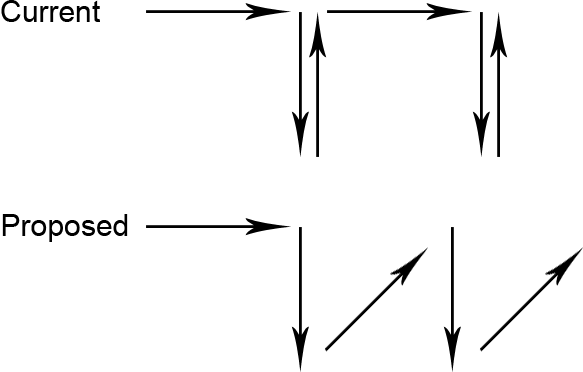Thanks @gloomyandy, I misunderstood. Changing it to:
M350 Z16 I1
M92 Z400
M906 Z300
M569 D3 P0.2 V20
G1 F60
G28 Z
G1 Z10 F60
G1 Z0 F60
made it silent. Thank you so much!
Thanks @gloomyandy, I misunderstood. Changing it to:
M350 Z16 I1
M92 Z400
M906 Z300
M569 D3 P0.2 V20
G1 F60
G28 Z
G1 Z10 F60
G1 Z0 F60
made it silent. Thank you so much!
I had a similar issue. Take a very close look at the IR receiver (the one with the black lens). In my case, the solder hadn't completely flowed underneath the pad and adding just a little bit more made it spring back to life. According to dc42, this is the first thing they look for when one of these sensors doesn't trigger.
Source: https://forum.duet3d.com/topic/20350/confusion-on-m558-for-duet-maestro-with-rrf3/13?_=1642216131349
Currently, when a point is probed, the head must move in X to the point, probe all the way down to the bed, then raise all the way back up, when it will move in X to the next point. This could be optimized by moving in X while simultaneously raising the head. I don't see an option to perform this using G29. I believe this modification could reduce probe times by quite a bit.

Sorry, I should have mentioned that that diagram is viewed from the X-Z plane. Eg left/right is X and up/down is Z.
I don't quite understand your edit @Phaedrux. If you were using a probe such as a switch or piezo sensor, you would be dragging the sensor across the bed. The diagonals that I had included would allow the sensor to clear the triggered state by still utilizing the dive height. This is important when it comes to highly warped beds, or for any sensor that requires contact with the bed.
Edit: Oh, I think your suggestion may work for analog non-contact probes and beds with a low amount of warp, but it would fail for anything else.